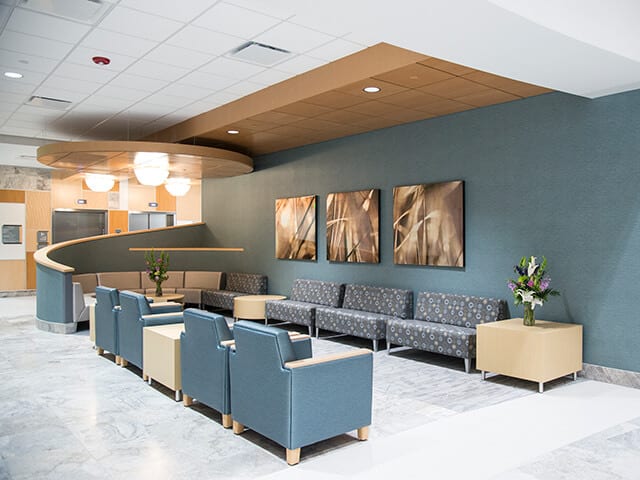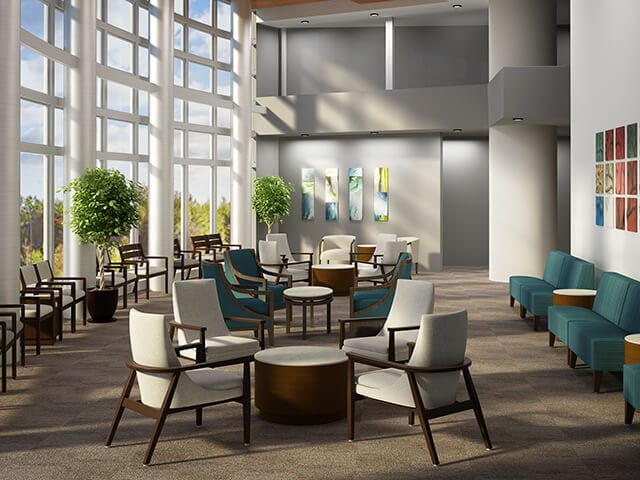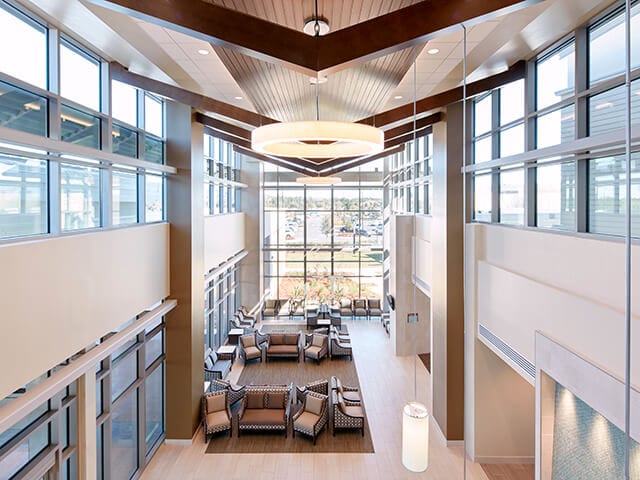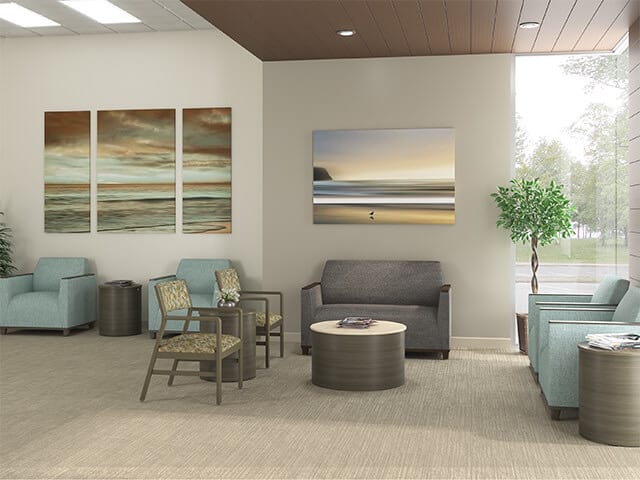Emergency Room Comfort and the Aging Population
By 2030 one in five Americans will be over the age of 65. The fastest growing population is adults over 85. Emergency Rooms can be chaotic and a dangerous place for older adults. Long wait times, bright lights, stark white walls and very shiny floors all add to the confusion of an elderly person who is rushed to an emergency department. Understanding hospital interior design, healthcare furniture and the many issues that can be positively affected, will go a long way in reducing stress when elderly people are admitted to the ER.

Furniture and Senior Care in Emergency Room
Because everyone at every age interacts with it, furniture has a profound affect in helping set the tone for a healthcare environment. A well placed chair for aging hips, a comfortable chair that is easy to get in and out of, and a smartly designed environment that is soothing with wood like finishes that are durable and easy to clean are just good design ideas. Furniture that is versatile and great for an aging population can positively affect a hospital’s ability to differentiate themselves from other hospitals. Other options to consider should be adapting part of its waiting area and treatment spaces to better accommodate bariatric patients and guests.

Thinking about the patient and the family dynamic
Creating spaces that mix and match furniture is a healthcare design trend that should also take into consideration the family dynamic. Some patients might have family members with similar conditions, so having an option to sit together in the waiting room, with varying furniture options, would reduce the stress associated with having the family sitting across the room from the patient.

Eliminate the Negatives Associated with Waiting Rooms
Molded metal chairs that are arranged like what you see at a bus stop has a negative connotation and gives an institutional appearance. Adding recliners for longer wait times, as well as hip and lift chairs, all added to the design element and alleviate stress. Cushioned chairs with high backs and smooth surfaces help prevent skin breakdown for patients who are not on gurneys or who choose not to lie down. Lastly, creating roomy walkways helps people in wheelchairs and walkers to help themselves getting around.

